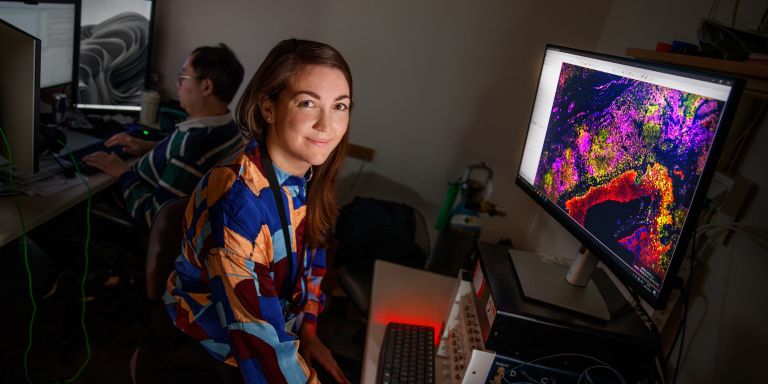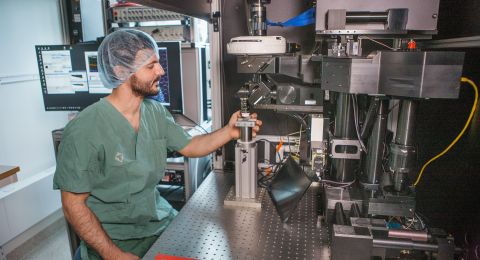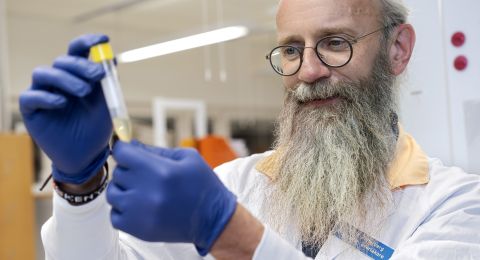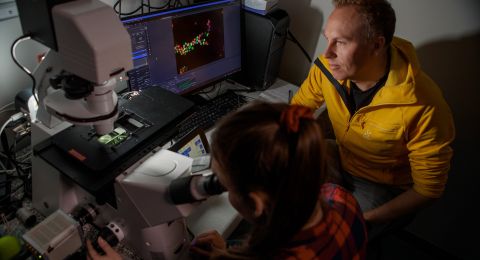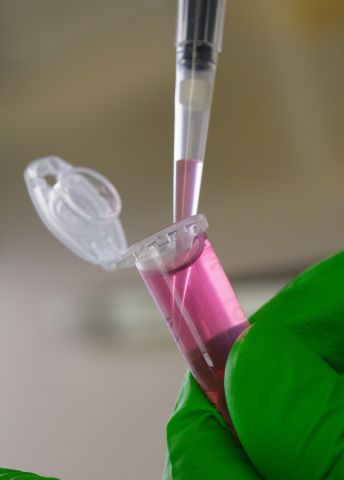
Project Grant 2024
Spatially resolving tumor and immune clonal niches in human breast cancer
Principal investigator:
Dr. Camilla Engblom
Co-investigators:
KTH Royal Institute of Technology
Joakim Lundeberg
Karolinska Institutet
Jonas Frisén
Johan Hartman
Institution:
Karolinska Institutet
Grant:
SEK 26 million over five years
When a tumor forms, the body’s immune cells such as T cells, B cells, macrophages and dendritic cells can be activated. They are all different types of white blood cells. But which of them can best destroy cancer cells? How do they do it? And how are immune cells impacted by the microenvironment in and around a tumor?
Over a hundred years ago, it was discovered that the body’s immune cells can enter tumor tissue, and since then cancer researchers have studied these cells. It is clear they play an important role. But even today many questions remain about how they attack their targets.
“If we see that certain types of immune cells have managed to infiltrate a tumor, it is generally a reliable indication that the immune system has been activated,” says Engblom, who is a researcher at Karolinska Institutet (KI) and an affiliated researcher at SciLifeLab.
She is now focused on understanding more about how the immune system, gene expression, immune cells and antibodies interact in the body when they fight tumors. The aim is to obtain new knowledge that can be used in immunotherapies for breast cancer.
In triple-negative breast cancer, an aggressive cancer with a high risk of recurrence, some patients can be treated with immunotherapy. The treatment prevents cancer cells from inhibiting T-cell activity. Once the blockade is removed, T cells are released and can more vigorously attack the cancer cells – often with good results.
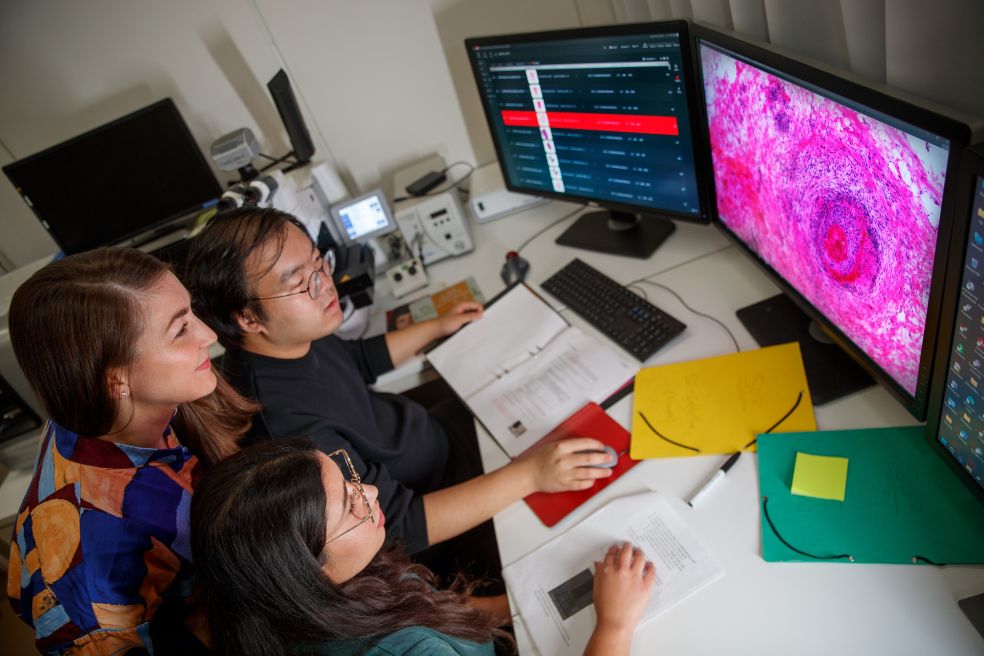
Mapping immune cell positions
Engblom is particularly interested in the part played by B cells and antibodies in breast cancer.
“In 2020, three notable articles were published in Nature showing that more B cells, along with structures in tumors containing aggregations of B cells, yield better responses to immunotherapy.”
Since then, the interest in B cells in the research world have surged, she says.
B cells can either divide and become memory cells, which “remember” earlier diseases, or plasma cells, which can secrete large amounts of antibodies when required.
The team’s research relies heavily on a sequencing technique called spatial transcriptomics (ST), which enables the researchers to visualize the location of immune cells in samples of tumor tissue.
Engblom and her fellow researchers in the project, which is funded by Knut and Alice Wallenberg Foundation, have previously developed a method in which they expanded ST to also capture and visualize B- and T-cell receptors in tissue.
“We now have a unique opportunity to find out where these B cells, plasma cells and antibodies are located, and what they bind to or the targets at which they are aimed,” she says.
She explains that the ability of B and T cells to attack a tumor lies in their receptors, which form during cell development. These receptors give each B and T cell a molecular specificity that enables them to distinguish one part of a protein from another.
The receptors can thus differentiate between various antigens such as coronavirus, measles virus or foreign tumor cells, as well as the body’s own antigens. The B-cell receptor itself also exists in two versions: it is present on the cell as a receptor, and secreted from a plasma cell in the form of antibodies.
“We know very little about the molecular specificity of B cells and antibodies in cancer. But we want to use our technology and other functional tests in the lab to identify the antibodies present in different tumors, what they bind to, and what they do to the cancer cells.”
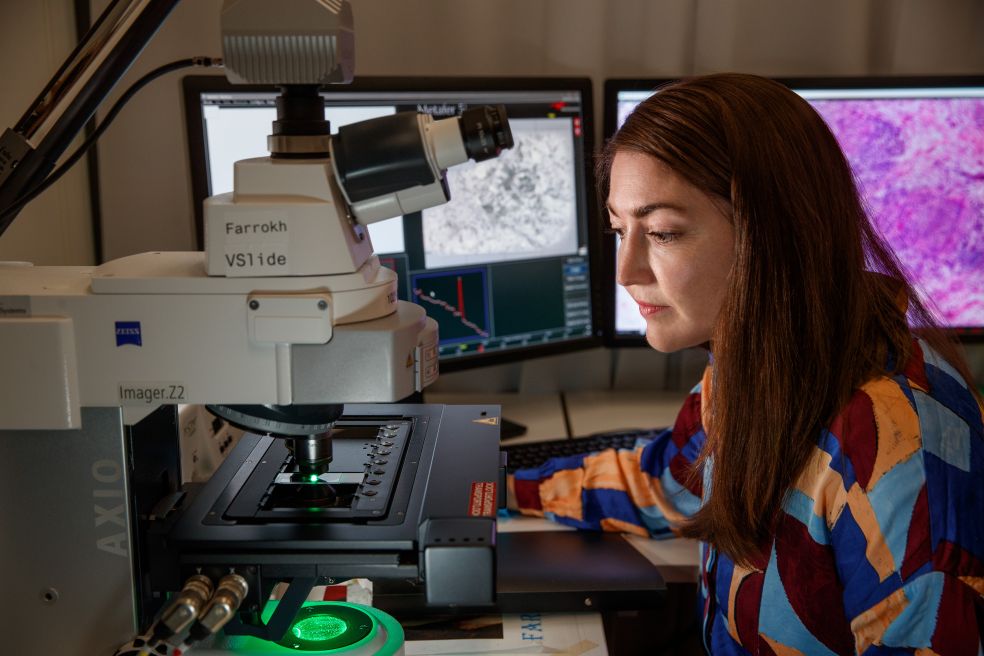
How do the antibodies work?
So far, the researchers have managed to distinguish an antibody and, they believe, the target to which it binds – a breakthrough that may lead to further discoveries. The new findings are now being tested and validated.
Engblom explains that they are also cultivating tumor cells to test which antibodies can eliminate cancer cells.
“The goal is to find antibodies that inhibit cancer function in the tumor. They may have a direct impact on the tumor cells or an indirect one, by activating other cells in the microenvironment.”
If they succeed in their ambition to find good antibodies, the hope is that these could be included in an immunotherapy where macrophages or NK cells (Natural Killer cells) might be enlisted in the fight against the tumor.
The researchers also believe the microenvironment of immune cells and antibodies can impact the body’s immune response.
The microenvironment in and outside the tumor contains small molecules called metabolites, which supply cells with amino acids, fats or sugar molecules that we ingest through our food, gut flora, or medications.
“Other researchers in the project are conducting a multimodal evaluation of tumor microenvironments, including cell development within the tumor, metabolites, RNA/DNA. The aim is to understand tumor cells in their context and, using AI, piece together all these dimensions of the tumor into a holistic picture to better understand breast cancer development and patients’ responses to treatment,” she says.
Text Monica Kleja
Translation Maxwell Arding
Photo Magnus Bergström
